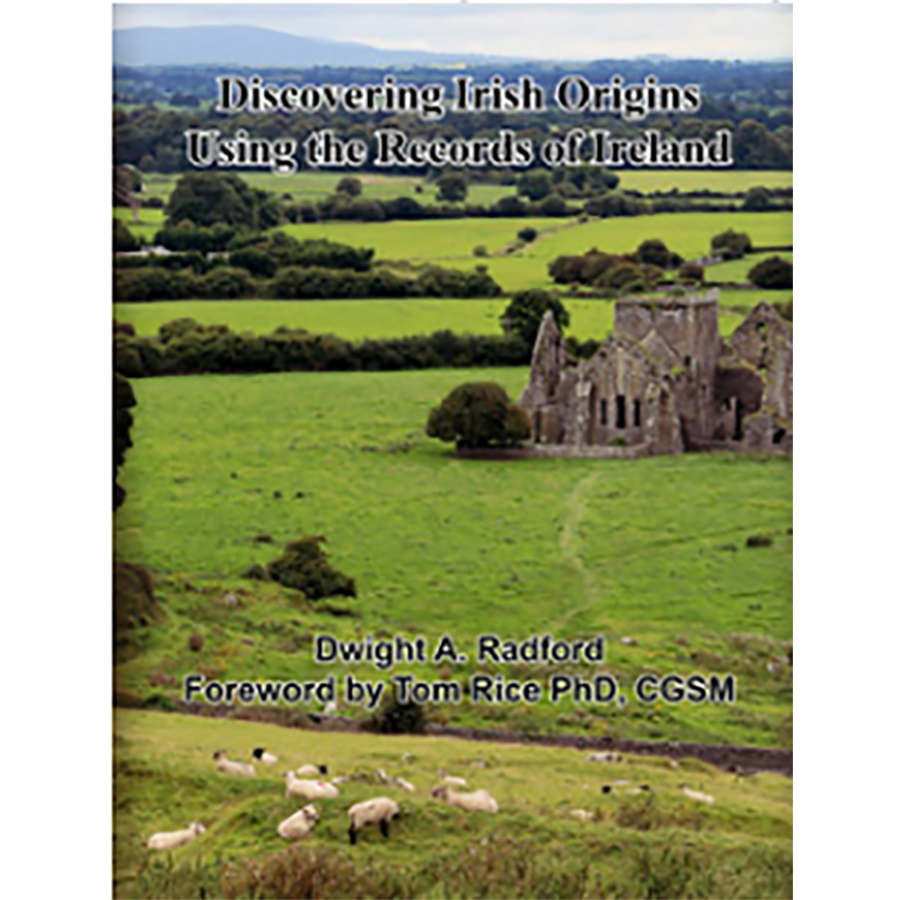Discovering Irish Origins Using the Records of Ireland
Couldn't load pickup availability
Discovering Irish Origins Using the Records of Ireland is a happy combination of reference sources for Irish genealogy and methods for how to skillfully employ them. The strength of this book as a guide is its exceptional explanations of not only the usual Irish genealogy records but also of some that are mentioned less often in other works, such as those of Petty Court Sessions, workhouses, and prisons. For methods' instruction, its worth is twofold. It goes to some length about how to effectively search within Ireland's resources, whether online or at sites. A major aspect is its repeated discussion of further steps to research after obtaining results from each of the record types, that is, "If you find this, then look here or here next." This facet of how to successfully search and what to do with the material discovered is not often found or explained well in most other genealogy texts.
So, what is so special about this presentation of Irish genealogy research? Breadth of coverage of helpful details is provided. All the usual sources are contained: censuses and census substitutes, church records, civil registrations, cemeteries and tombstones, estates, taxes, deeds, and voters' lists. Some sources often neglected are included that are a must in any thorough Irish investigatory project because of the loss of nineteenth-century censuses and the late start of church registers for most of the Catholic Irish population: voters' lists and records of workhouses, prisons, and Petty Court Sessions. To make searching these papers more productive, Radford incorporated an exhaustive inventory of resources to explore as well as helpful directories. Included are religious denominations that might be considered minor; lists of early, often-forgotten occupations; situating Church of Ireland diocesan courts into their respective counties; examples of fair towns and fair dates in County Leitrim; and detailed lists of mills by location and types of key mines, prisons by location and type, principal destinations for prisoner transportation by date and current names, and historical terms with definitions relating to hangings, land measurements, and land records. Radford's review of Griffith's Valuation and associated manuscripts is one of the best to be found.
All the information in the above mentioned sources is useless if researchers do not know what to do with what they find. The answer to this dilemma is what clearly sets Radford's work apart. The methods aspect of the book is extensive and its strongest point. Radford repeatedly suggests how the researcher should utilize the search results from each source for the most rewards. Time and again, he starts with "If you know …, search this way in this record type." Then he proceeds by showing "If you found …, look here next." He ends with chapters on strategies that focus in depth on how to handle the vagaries of Irish names, tying families together through name distribution surveys, how to find the ancestral homesites, and how to navigate the perplexities of online databases This sort of guidance is seldom found in other genealogy works.
Research strategies combined with painstaking document evaluations make this an excellent teaching tool for Irish researchers of any competence. All can benefit from Radford's knowledge.
Dwight Radford
2021, paper, 293 pp.
ISBN: 9781628592955
121-FR0152
